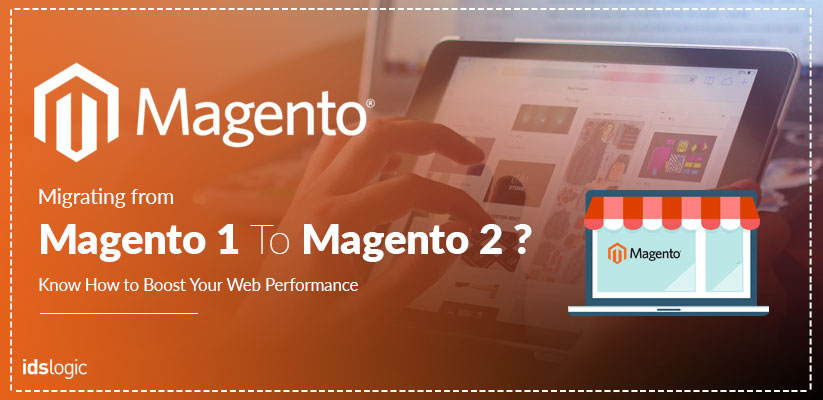
Migrating from Magento 1 To Magento 2? Know How to Boost Your Web Performance
Creating a wonderful experience for the users has always been a top priority for ecommerce businesses. Keeping this in mind, the retailers have tried to offer top rated features and Magento has always been the number one choice for millions of merchants and the number is still growing exponentially.
“Despite being very popular and flexible, Magento 1 has been under the continuous scrutiny for various performance related issues that also includes poor page load speed. To overcome this, business owners are upgrading to the Magento 2 platform.”
Magento 2 comes with powerful features like user friendly checkout, improved mobile responsiveness, multiple payment gateways and high page load speed, but during migration from Magento 1 to Magento 2 things can be a bit challenging for your business. While the two versions are quite different in the way they are built, it is important to customize things to meet your particular needs.
The Challenges and How to Handle Them:
Resource Needs:
One of the main challenges of the migration is the sudden increase in resource needs. Magento 2 can use much of your server resources. Though your real system needs will highly depend on the usage pattern, there will still be some high resource needs. PHP M1 needs 512 MB and PHP M2 needs 2GB. This is about 4 time more. Depending on the extensions, traffic, store layout and the product structure, you can expect an increase by at least 30 – 40 %.
Did you know: Magento 2.3 started using GraphQL as an alternative to REST and SOAP. A Look at Some Exciting Features in Magento 2.3
Understand the Key Differences between the Two:
Another major difference between Magento 1 and Magento 2 are the system requirements. Magento 1 was first released in the 2007 and it is already 10 years old. Though it has a venerable status, it is still going strong, but its support services will soon come to an end.
There are a few brand new technologies that Magento 1 doesn’t have and one is Varnish. It is available for Magento 1, but through a third party module and Magento 2 supports Varnish from the standard configuration menu. It is better to use the technology as a caching solution.
“Using Varnish for Magento 1 involves a convoluted installation process and improperly installed varnish leads to stability risk to the system. With Magento 2, the installation process is much easier.”
Solve the Issue of Performance Slowdown in Magento 2
Magento 2 offers a better performance than M1 because of its access to Redis, Varnish and even the full page cache. In spite of all these, users still complained that M2 feels sluggish, which is actually not true. The problem is that Magento 2 has frontend dynamic AJAX code, which displays a spinning wheel wherever the content on the page is not ready for display. This spinning often gives the impression that the site has become slow when the truth is that it is ready for interaction.
Use Elasticsearch to Enhance the Search Performance:
Elasticsearch is a very useful search acceleration tool that has gained much popularity since the M1 release. M2 supports it natively, but for M1 you have to purchase a third party extension in order to use it.
Native support offers 3 core advantages that are native Elasticsearch is free, with native support, the elasticsearch will also get updated with Magento and you can enjoy great stability with less compatibility issues with core Magento.
